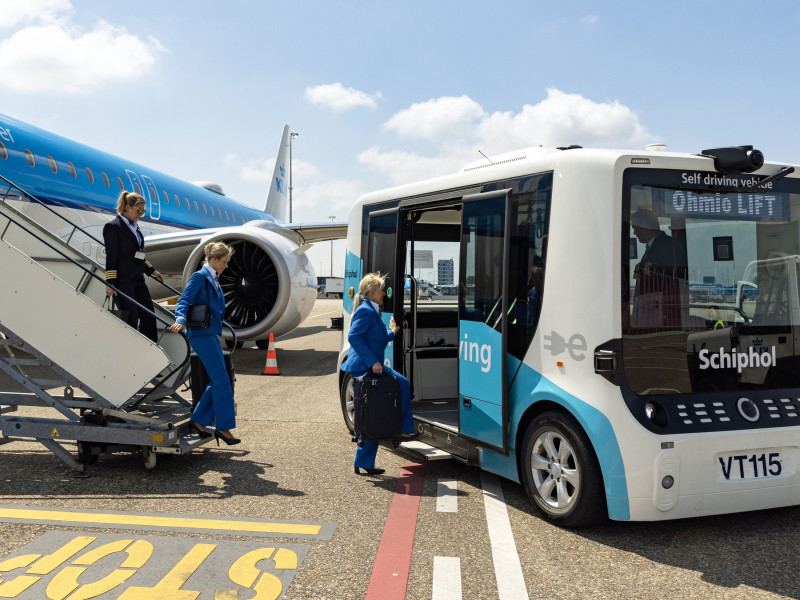Airlines
For Air Defenders – Airbus Defence and Space produces 2,000th target drone
For Air Defenders – Airbus Defence and Space produces 2,000th target drone

Air Defenders from all over the world have been practicing with Airbus Defence and Space target drones for more than 20 years to make sure their nation’s air defences function when it matters. In Friedrichshafen, Target Systems & Services, a subsidiary of Airbus, has now produced its 2,000th drone.
India’s $3 Billion MQ-9 Reaper Drones Deal With US In Advanced Stage(Opens in a new browser tab)
The unmanned aerial system with the serial number 2,000, a Do-DT45, will be used in a military exercise at the training ground of Airbus partner Andøya Space Defence in Norway. There, it will be launched by an Airbus team via ramp, accelerate to up to 440 knots (814 km/h) and climb to 25,000 feet (7,620 metres) depending on the requirements.
In the air, the Do-DT45 can then simulate a range of threats such as: fighter jets, drones or cruise missiles, which customers can engage in with live fire. The operation does not pose any risk: Andøya Space Defence’s training site is a restricted area; the remains of the target drone are disposed of properly.
Airbus Defence and Space Target Systems & Services – The Portfolio
In addition to the Do-DT45, the Target Systems & Services solution portfolio also includes the Do-DT55 (simulates anti-radar missiles), HT05 (simulates combat helicopters) and Do-DT25 (simulates fighter jets, drones and cruise missiles). Customers are armed forces from all over the world who use the flight target display as a full service. The Target Systems & Services team brings material and personnel to the site, sets up launchers and ground control stations and gets the drones ready for take-off. The flights are planned and carried out according to the customer’s requests.
Do-DT drones are not only used as target drones. Equipped with sensors and data links, they can also be used to test the interaction of unmanned and manned aircraft for the Future Combat Air System (FCAS)or technologies for autonomous air-to-air refuelling.
More information about Target Systems & Services is available here.

Airlines
KLM Begins Testing Self Driving Crew Buses at Schiphol Airport

In a significant step towards modernizing airport operations, Schiphol Airport has launched the second phase of its trial for electric self-driving buses.
This initiative, in collaboration with KLM Cityhopper and KLM Ground Services, is aimed at enhancing efficiency and sustainability at one of Europe’s busiest airports. Following a successful initial trial with the self-driving buses from supplier Ohmio, the new phase is now underway.
This phase focuses on deploying the autonomous buses on a fixed, pre-programmed route that connects the apron to the terminal. The primary users of this service are the KLM Cityhopper crew, who will benefit from a streamlined shuttle between their aircraft and the terminal. best cabin crew skytrax
Air France-KLM Orders 90 Airbus A350 Long-Range Aircraft:Click here
The trial’s first phase centered on assessing the technical capabilities and user-friendliness of the buses. Now, the focus shifts to the apron—a bustling area characterized by high activity levels, including aircraft movements and ground handling operations. The autonomous buses will navigate this complex environment multiple times a day, ferrying KLM Cityhopper crew from Apron A to the terminal.
Equipped with advanced sensors, cameras, and GPS, the buses are designed to handle the dynamic conditions of the apron. They feature LIDAR technology, providing a comprehensive 360-degree view that enables them to detect and avoid obstacles up to 30 meters away. This cutting-edge technology ensures safe and efficient operation in the busy airport setting.
Schiphol Airport is committed to becoming one of the world’s most sustainable and high-quality airports by 2050. A core component of this vision is the transition to a fleet of autonomous, zero-emission vehicles.
How to get admission in Emirates Aviation university?:Click here
This shift is part of a broader strategy to automate ground operations while maintaining a vital human presence in a supervisory role. By doing so, Schiphol aims to reduce emissions and enhance the overall efficiency of its operations.
The integration of self-driving buses into the airport’s daily operations represents a major milestone in achieving these sustainability goals. As the trial progresses, Schiphol, KLM Cityhopper, and KLM Ground Services will continue to evaluate and refine the technology, paving the way for a more automated and environmentally friendly future in aviation ground services.
-

 Travel1 week ago
Travel1 week agoAir India to Expand US Operations with Three New Routes After a Decade
-

 Travel2 weeks ago
Travel2 weeks agoWhy We Should Avoid These Stamps in a Passport
-

 Airlines1 month ago
Airlines1 month agoInvestigations Reveal Fake Chinese Titanium in Boeing and Airbus Jets
-

 Tech4 weeks ago
Tech4 weeks agoChina’s CATL Plans 1,800-Mile Electric Plane Launch by 2027
-

 Airport3 days ago
Airport3 days agoTop 10 Largest Airports in the World by Size
-

 Aerospace4 weeks ago
Aerospace4 weeks agoChina’s Fighter Jets Turn Wings into Autonomous Drones
-

 Airlines4 days ago
Airlines4 days agoAir India Rolls Out A350s for Delhi-New York JFK and Newark Routes
-

 Defence3 weeks ago
Defence3 weeks agoBoeing Enhances Chinook with New Engines and Block II Upgrades at $96 Million







